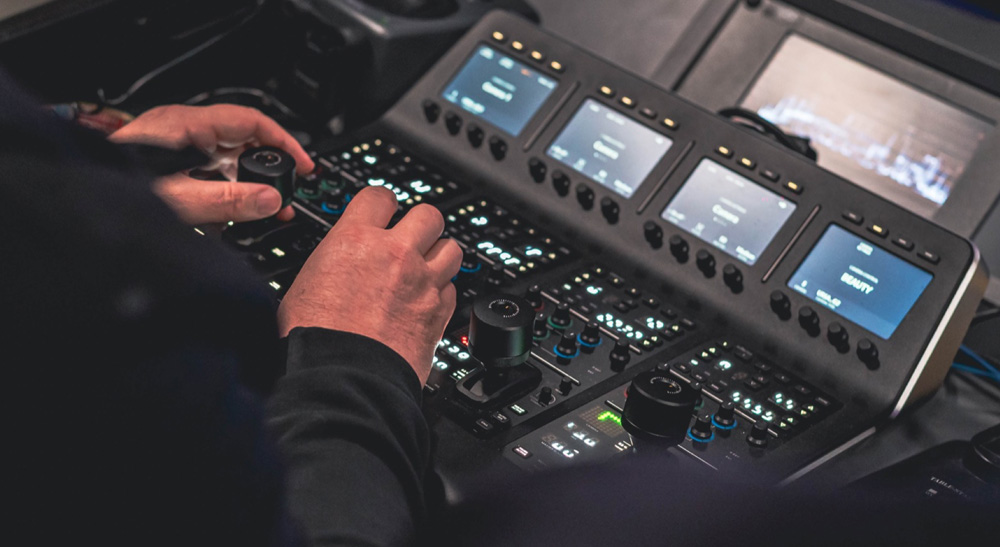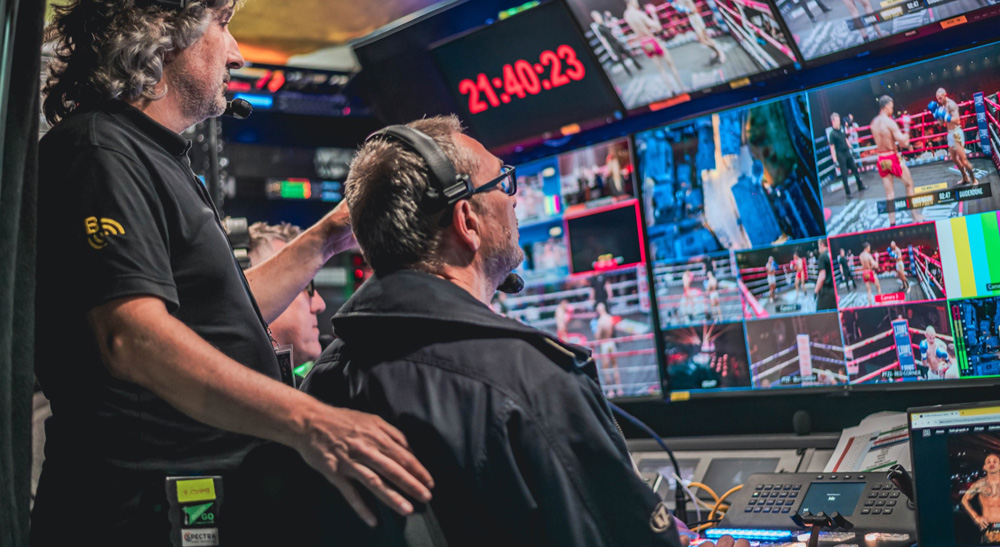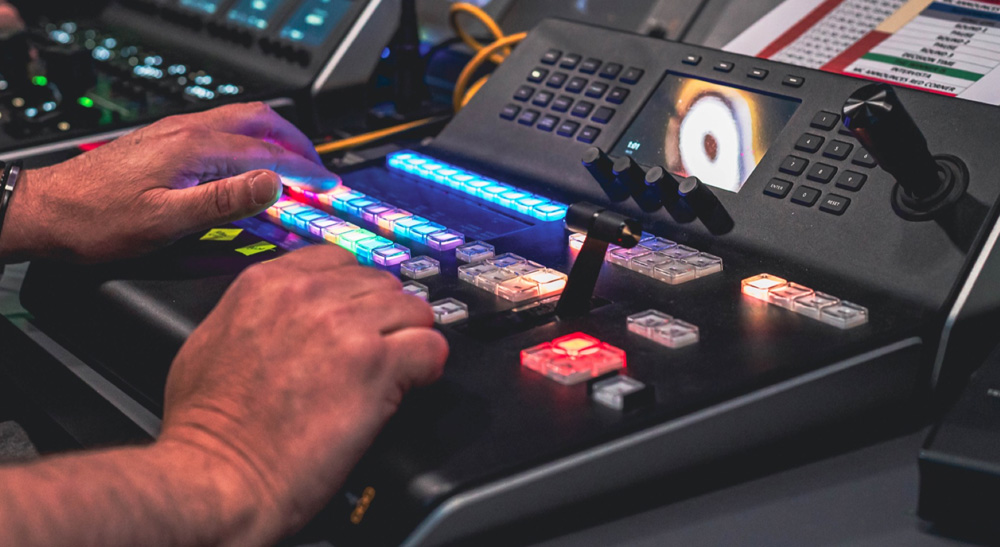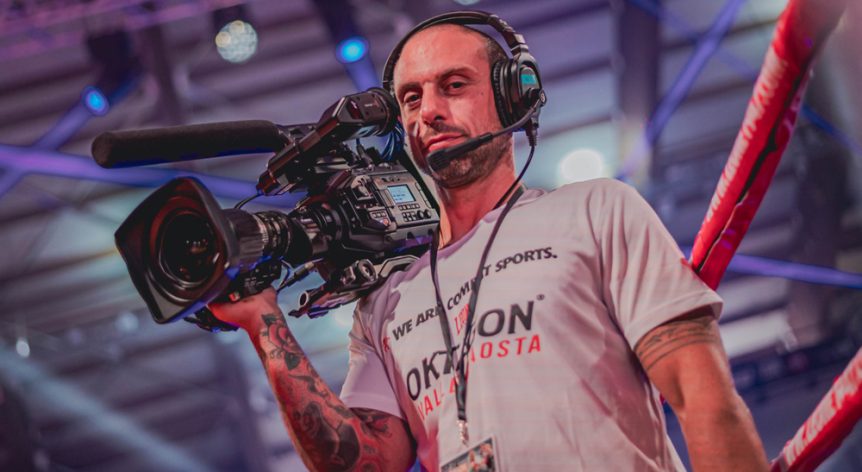BeeLab delivers DAZN’s broadcast of Oktagon 2025 with Blackmagic Design.
Fremont, CA, USA - The Courmayeur Sport Center, an ice rink in Italy’s Valle d’Aosta region, played hosted to the 28th edition of Oktagon, one of Europe’s longest running martial arts galas. With 15 fights, including four ISKA world title bouts, and a global live audience via sports streaming platform DAZN, the production needed to deliver broadcast grade results in an unconventional venue.
The client brief was ambitious. Convert a working ice arena into a reliable broadcast environment, complete with redundancy, without disrupting daily operations. BeeLab production house, supported by Manco, a reseller, answered the challenge with a dual OB van solution built around a Blackmagic Design workflow.
“The base of our setup was ice covered by a thin insulating carpet,” explained BeeLab Technical Director Enrico Beltramo. “Cable routes and signal redundancy had to be rethought from scratch.”
With a 15 degree temperature difference between indoor and outdoor, condensation posed a constant danger. “Cabling was either lifted or sealed, and signal and power lines were separated to prevent short circuits. Camera placement, rigging, and movement were also affected by the slippery surface and absence of overhead trusses,” Beltramo noted.

BeeLab deployed two OB vans, each with distinct responsibilities but fully synchronized. The main unit handled camera acquisition, switching, routing, and audio, while the second van managed graphics, replays, playout, and streaming of non DAZN segments.
At the core of the system was an ATEM 4 M/E Constellation 4K live production switcher paired with an ATEM 1 M/E Advanced Panel 10. Four multiview feeds were routed to the director, vision engineer, replay operator, and lighting designer.
“The ATEM allowed us to handle complex transitions, stingers, and layered multimedia elements without overloading external graphics and replay systems,” Beltramo said.
Primary match coverage relied on three Blackmagic URSA Broadcast G2 cameras using SMPTE fiber channels. Additional fixed angles relied on a mixed package of Blackmagic Studio Camera 4K Pro and Blackmagic Micro Studio Camera 4K G2, alongside PTZs and a drone.
All camera feeds were routed into the OB vans for monitoring, ISO recording, and multiview. Signal distribution relied on a Blackmagic Videohub 40x40 12G router, with an additional Blackmagic Videohub 20x20 12G managing returns and redundancy. Signals to and from the URSA Broadcast G2s relied on Blackmagic Camera Fiber Converters and Blackmagic Studio Fiber Converters, providing bidirectional 12G-SDI, tally, power, and intercom.

To ensure resilience, BeeLab deployed dual fiber lines and Blackmagic 2110 IP Converters to provide hybrid SDI/IP backup across all critical links. “Our routing model had to support not just the live feed, but multiple returns, including DAZN, LED walls, commentary units, and ISO ingest,” added Beltramo.
For transmission, BeeLab used a LiveU LU800, with an LU600 as backup, routed through EI Tower ervers to DAZN.
Replay was managed through BeeLab’s internal system, capturing four SDI feeds via a DeckLink Quad 2 capture and playback card for instant playback. LED content ran through Resolume Arena via an ATEM Mini Extreme ISO live production switcher, while static playout was handled by a HyperDeck Shuttle HD broadcast deck. Undercard bouts were streamed using a separate vMix setup.
Program out and clean feeds were recorded to SSDs using HyperDeck Studio 4K Pros in ProRes 422. Simultaneously, an ATEM SDI Extreme ISO captured backups in H.264 while generating a DaVinci Resolve project, linking all angles into a presynced multicam timeline. “As soon as the event ended, we opened the Resolve project with all camera angles, cuts, timecode, and audio intact,” noted Beltramo. “That allowed us to create show highlights and social media content very quickly.”
“That level of immediacy was only possible because we’ve established a workflow that is robust, scalable and agile,” concluded Beltramo. “It let us turn a venue with no fixed infrastructure into a fully operational broadcast studio.”

